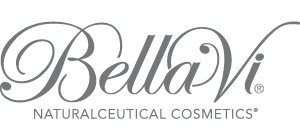Allergy Certified = Excluding And Restricting Potential Allergens From Our Formulations
23.08.2021 21:35, Bella Vi
Bella Vi has pledged to exclude and restrict potential allergens from our formulations and have undergone clinically testing of our products to validate the safety of our products and we are proud to be Allergy Certified®.
An Understanding To Becoming An Allergy Certified®. Brand
Australian labeling laws are scant, allergens are only required on food labels. In the EU it is a mandatory requirement to provide allergy advise on cosmetic products. SCA's Allergy Certified® campaign logo endorses brands that pledge to provide consumers with full ingredient transparency as well as specific safety advice concerning potential allergens.
Cosmetic ingredients are highly processed however, processing is not aimed at removing potential allergens from cosmetic ingredients. Therefore most brands undergo a document based review that 100% excludes & restricts the chemicals of concern, which are both natural and artificial, man-made chemicals.
Alternatively, brands can submit clinical test reports that confirm that the product formulation and/or the ingredients of concern, are free-from potential allergens. Where a product is tested and found to be suitable for human skin, where clinical studies indicate that the product is non-sensitising to skin, non-toxic to skin and/or non-irritating to skin, the product is scientifically proven to be a non-irritant when applied to human skin. Clinical tests can also prove if allergens have been removed from specific ingredients such as propolis from bee derivatives. Where a formulation is 100% compliant with the Allergy Certified Criteria, the product can be endorsed with the Allergy Certified logo. Alternatively, clinical test reports can confirm that the product is a non-irritant when applied to skin.
Safe Cosmetics Australia (SCA) maintains that the chemicals outlined in the documentation are associated with allergic dermatitis, contact dermatitis and/or skin irritation that has the potential to trigger systemic reactions either immediately or after repeated long-term use. The campaign highlights the need for improved labeling laws with ingredient transparency and allergy advice similar to mandatory food labels. Brands can adhere to the campaign criteria or substantiate their marketing claims with clinical test reports, confirming the nature of their product formulations. The Toxic-Free Campaign aims to raise chemical awareness and provide manufacturers with a higher standard of manufacturing cosmetics, than current law provides & that consumers demand.
